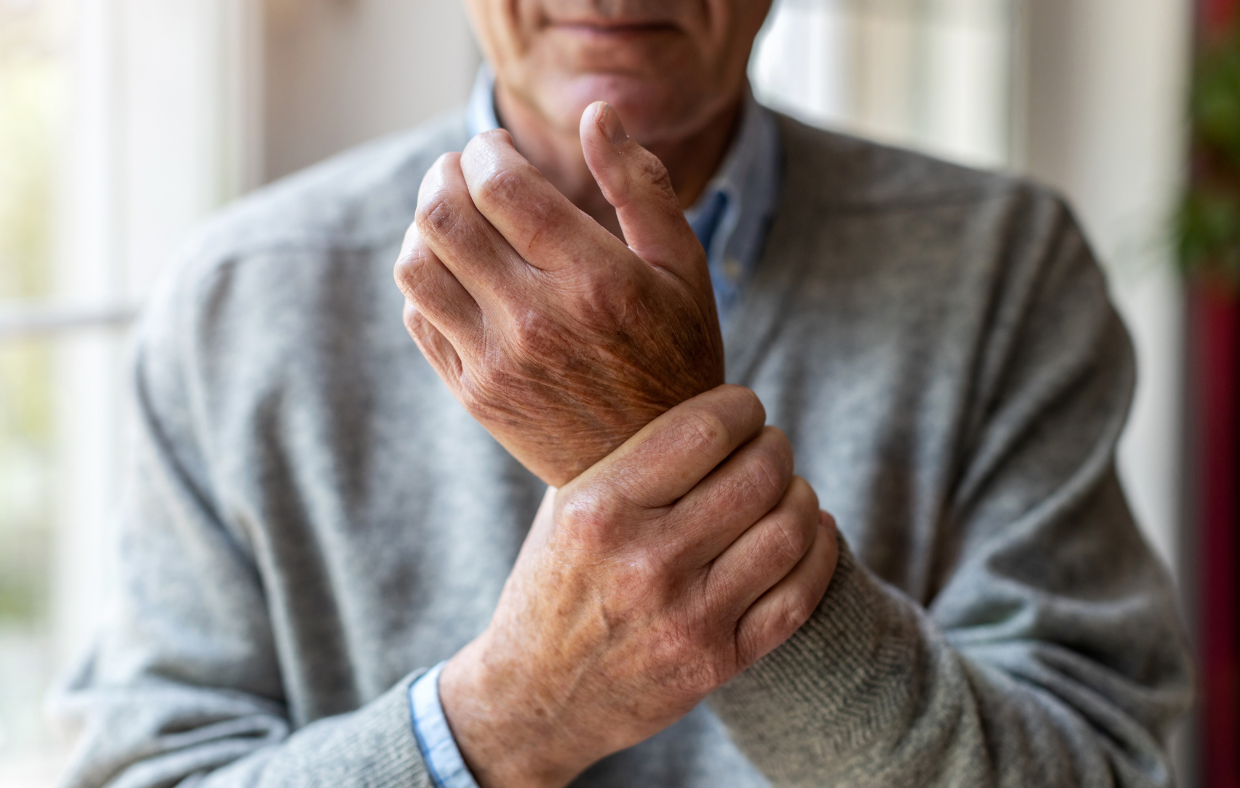As my patients grow older, they tell me they feel as young as ever on the inside—yet their bodies are declining, and they want to know how they can stay as healthy as possible. Especially for women, one important factor to consider is bone density. During menopause, which usually occurs between ages 45-55, women’s estrogen levels drop dramatically, and this leads to a decrease in bone mass which can increase the risk of bone fractures (broken bones). Men also lose bone density as they age, but this generally happens at a slower rate and later in life than most women.
On the inside, bones have a structure like honeycomb. Strong, dense bones have tiny holes while weak bones are more porous. Bones are made up of living tissue that the body continually replaces; this is called “remodeling.” As we age, our ability to replace bone mineral declines and our bones become weaker and more brittle.
Osteoporosis
Having low bone mineral density is divided into two stages – osteopenia (the milder form) and osteoporosis (the more serious progression). Osteoporosis means “porous bone” and it indicates the body is not able to produce enough material to keep bones strong, which can lead to a fractured or collapsed vertebra, bones breaking more easily than expected, and/or a stooped posture.
It’s never fun to break a bone, but for older adults, it can be the precipitating event that begins a decline they do not recover from. Breaking a hip often requires a hospital stay and then rehabilitation, which may involve time in a nursing home. Because of the fracture, patients cannot care for themselves, and they cannot exercise to keep up their strength; they get caught in a reinforcing loop of decline.
Prevention
The good news is that there are ways to slow the effects of the aging process and bone loss, starting with exercise. Thirty minutes of exercise per day, such as a brisk walk, can have huge benefits. Adding a little resistance training is even better, using bands or light weights for strengthening.
Getting enough calcium and vitamin D is also helpful. A balanced diet with calcium-rich foods is a good start. You can also take supplements to be sure you get at least 1000 mg of calcium per day. While the sun is a wonderful source of vitamin D, you’ll need to balance the risks of skin cancer with the benefits of vitamin D. Consider exposing your skin to ten minutes of sun a day and talk with your medical provider about vitamin D supplements, too.
- If you are a smoker, one of the best moves you can make is to quit smoking. Bones are made up of four types of cells:
- Osteoblast: Build new bone tissue
- Osteoclast: Absorb and remove unwanted tissue
- Osteocyte: Maintain bone as living tissue
- Hematopoietic: Produce red blood cells, white blood cells, and platelets
During the process of bone remodeling, osteoblasts create new bone tissue, while osteoclasts remove old or unwanted bone tissue. Smoking accelerates bone loss by disrupting the process of bone remodeling, leading to weak, brittle bones.
There are not many warning signs of osteoporosis, and many people are not aware just how fragile their bones are until they fall and are forced to deal with a fracture. This is why it is important to get screened early. Healthy women should start getting screened at age 65 with a DEXA scan, which is a type of x-ray that allows us to determine bone density to evaluate the risk of osteoporosis.
Reduce the Risk of Falls
In addition to taking care of your body to reduce the risks associated with osteoporosis, you can also adjust your environment. Remove tripping hazards such as rugs and cords. Install sturdy handrails in showers and staircases. Consider ways to remediate slippery surfaces, make stairs more visible, and include good lighting throughout the house.
If you have questions about your bone health or about how to stay strong as you age, ask your medical provider. We are here to help.
Kaylee Schukei, PA, is a primary care provider at MCHC Health Centers, a community-based and patient-directed organization that serves Mendocino and Lake Counties, providing comprehensive primary healthcare services as well as supportive services such as education and translation that promote access to healthcare. Learn more at mchcinc.org.

 MyChart Login
MyChart Login

